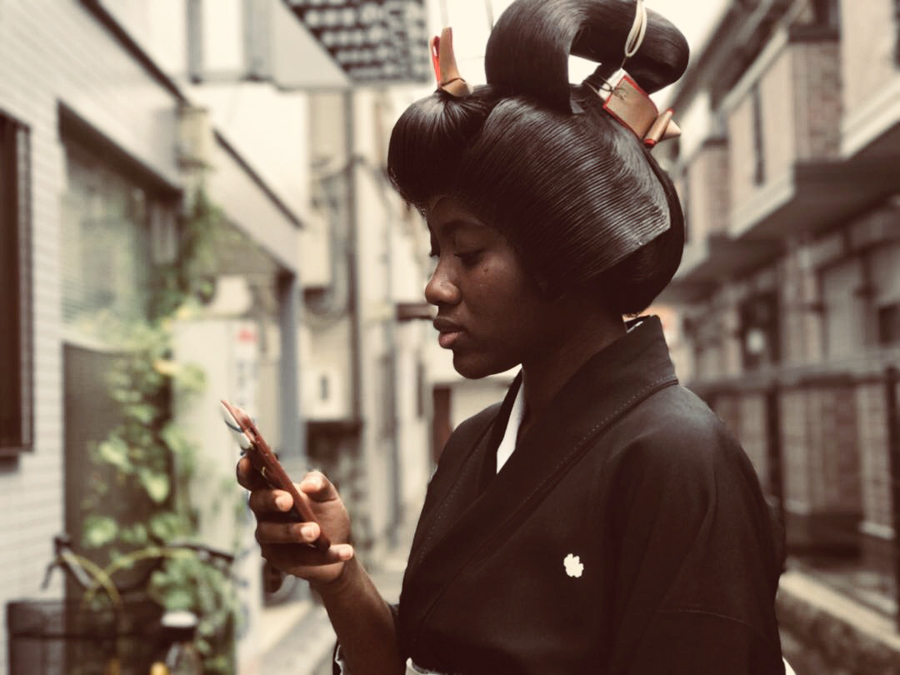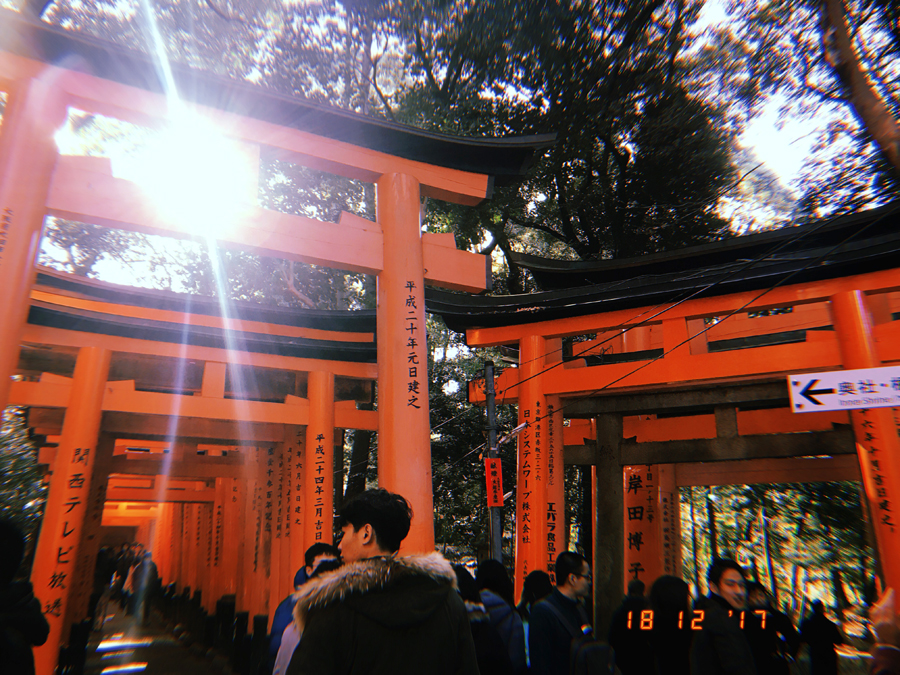Part 1: In the Land of the Rising Sun
By: AUDREY ANCHIRINAH
Apr 04, 2018

Audrey Anchirinah in a Kimono. Taken in Kashiwara, Osaka, Japan.
About "A Black Woman in Kimono" series
Claflin senior Audrey Anchirinah explores her experiences during study abroad in Japan as a black woman through an op-ed series, “A Black Woman in Kimono.” Using anecdotes drawn from experiences, she explores how Japan, though considered a first world country, still has long way to go when it comes to understanding race as well as embracing racial differences. In this series, she also explores how foreigners, especially Americans, navigate through the Japanese way of life. The target audience for this series is black college students as well as recent black college graduates who want to study abroad or travel abroad.
I arrived in Japan in late August. It was quite humid; however, I was excited to finally be at my destination after a stressful 13-hour layover in China. I had arranged with my exchange school, Kansai Gaidai, to pick me up from Kansai International Airport. It was the beginning of an incredible journey of discovering Japan’s rich culture as well as representing a rare diversity -- a black woman in Japan.
During my freshman year of college, we were required to make a four-year planner to serve as a guide. In this planner, we had to mark out a detailed plan for college to include which classes we needed to take, internships as well as study abroad. I made one just for the sake of getting a course credit.
Fast forward to spring semester of my junior year. I realized I had taken enough credits to be able to graduate the coming fall semester. I love to travel and had traveled to Cuba before the spring semester. I decided that I should try to study abroad that fall instead of graduating early.
You see I never thought I would study abroad as I did not delay my graduation or generate student loans. However, I found out about a student exchange program my school, Claflin University, had with a school in Japan. It was an equal exchange, therefore my scholarship will transfer over equally. Why not take advantage of such an awesome opportunity?
Most folks thought it was too risky since it was my senior year, but I made sure to do my research and plan it out (I should have taken my freshman planner seriously). The application was tough; I ran around campus chasing the head of international studies. I had to visit the financial aid office too many times and, finally, I had all my paperwork set in stone.
Why Japan
Since I was a child I have always loved Japanese culture as well as their animations. However, Japan was the best option for me because that’s the only place my school had an equal exchange partner. This was not a problem to me because I loved Japan already, so I was grateful for the opportunity.
I was excited to go study and learn the language for the first time. I have previously studied French, Spanish and Portuguese because I love languages and discovering cultures. In addition, I want to pursue a career in business journalism so experiencing Japan helped me understand what makes it the third largest economy in the world.
Being black in Japan
Kansai Gaidai is in Hirakata, between Osaka and Kyoto. Osaka and Kyoto are some of the famous cities in Japan and are part of Kansai region. Hirakata is a small city and is quite developed. It was easy to get to Osaka or Kyoto by train.
In Hirakata, the few black people you saw were most likely exchange students like me. Therefore, I was a rare sight to most Japanese folks. I was constantly stared at and sometimes accosted for photographs. These encounters were quite amusing.
Don’t get me wrong, I knew what I signed up for when I decided to study in Japan, one of the most homogenous countries in the world. This however is not always a bad thing. I was able to help the Japanese people I met learn about blacks or people of African descent.
“I was surprised to find out that my roommate was black,” Nana Cota, my Japanese roommate, said. “I never had a black friend, so you were my first.” Nana and I could not speak each other’s languages well; however as time went by, my Japanese improved and her English improved.
I think to this day she is one of the best roommates I have had in college. Initially she was very curious about the day-to-day activities of a black person, but she realized that being a different race does not make one an alien.
One thing that struck her was the texture of my hair and learning that you do not touch a black person’s hair without permission. In addition, she realized black people do not exist solely in forms of entertainment, despite the stereotype. Nana did well to inform her friends as well as her family about what she learned from me. I am glad she and her family were open-minded and treated me like one their own.
Other Japanese I met, like Luna Hashimoto, former dorm mate, did not have a set opinion of black people. “I think Japanese people find black people interesting, however we stereotype that at the mention of foreigners they are automatically white people,” she said.
In the land of the rising sun, my blackness and confidence were intriguing to my lovely Japanese folks. However, I was set to have the best study abroad experience while respecting the cultural difference and dissecting my way through.

The Red Tori Gates of Shinto Fushimi Inari Shrine in Kyoto.

Kansai Gaidai University, Osaka, Japan.